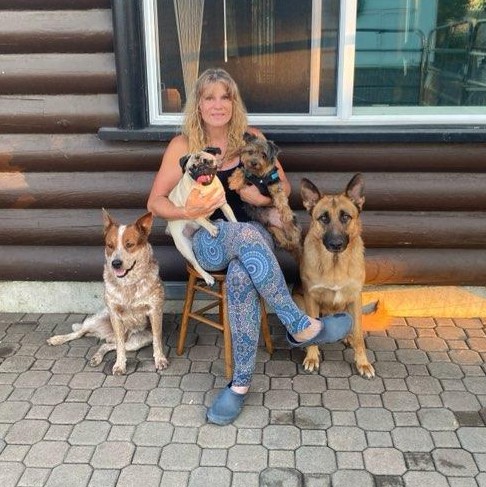A Second Thought Column by Teresa Balanesi
In a short series of looking to ‘the pack’ for truth according to Divine and Natural Law, we turn our attention specifically to the leader.
As humans and wolves are alike in so many ways, much of what we discover about wolves and their pack apply directly to us. Like wolves, humans are primarily pack animals that fall almost immediately into pack mentality (except for the outlier and occasional “lone wolf” which we will talk about later).
As we begin to understand that packs are like flocks, herds, schools, and colonies, then we see that there is a lot of commonality to us and our natural world.
Most leaders are born, some are created by circumstance. Most packs have hierarchal structure. In nature’s perfect order, every member has a role within the hierarchy. The alphas, betas, and omegas are all distinct and all serve important, if even individual roles. A pack was never meant to merge and operate as a class of one type or role beneath a leader. There are obviously going to be more omegas than betas and more betas than alphas in this intrinsic design of decision makers, managers, and support crew.
Let’s get back to the leader.

A leader can lead one or one hundred thousand, depending upon sphere of influence. In nature, the leaders manage a reasonable, ‘manageable’ small group. The animal kingdom is not driven to keep conquering and conquering for the sake of power and numbers. Manageable groups that have very reasonable and defined borders to their area of dominance are demonstrated in nature.
The qualities of a leader are intrinsic: integrity, awareness, determination, courage, fairness, consistency, resiliency, agility, flexibility, adaptability, communicability, collaborative and wise. We cannot put a label or a box around any of these things, Yet, we know them when we see them and we also do know when we do not see them. That is the key to the stability of a pack. A leader has an inherent respect of himself and by others, by virtue of all of these qualities as they are displayed. They are not manufactured, nor are they conspired in their origins. They simply are, and without question. Truly, you know it when you see it.
The natural world does not have any confusion when it comes to these matters. The only time there is any interruption to this is when another comes along who proposes that he can be a better, stronger leader. Of course, we know what happens next: a battle ensues between the two (not twenty-two or any other amount of participant) as the herd stays silent as the witness of who the truly stronger and more determined leader is, without doubt, revealed to them.
A couple of worthy notes.
A female can lead. However, percentage-wise it is the male that leads the mammalian world and with a very strong, sound, reliable alpha-female being his very second-in-command. That is definitely something to think about. It is also worth noting that the alpha-male and the alpha-female only breed with each other.
Also, alpha-females take over when the male is somehow incapacitated. Females are responsible for managing the intricacies of their pack or herd. The matriarchal female is responsible for a sound, disciplined, and a cohesive pack. That is no small task and requires everything listed as inherent and intrinsic to a true leader.
Human beings have multiple ways of proving dominance. For example, humans can use words to express novel ideas, as opposed to duking it out in the parking lot. Maybe this is where it gets tricky for us. Words can be used to manipulate the truth. The old saying, “a man is only as good as his word” comes to mind.
Looks should never matter, except to say that sometimes we can actually see a shyster just by the look in their eye. But we must have trained our eye first and have proven that we are able to differentiate, and we must be sure that we are not judging based upon myriad of our own prejudices that have no merit and blind us to what is real and true.
So what do we have to learn here? What qualities actually make up a good leader? That the qualities of a good leader are inherent to them. That these qualities are indeed, intrinsic as well, and that a very good leader examples his (or her) leadership by the continuity of his followers. That those followers can rightly see that he is and has proven to be a good leader. And (as we learned in our last expose, “The Pack,” that a good leader is not conquering for conquering sake, but that a healthy, well-balanced, well-nourished, thriving pack is the quintessential objective and evidence of his good leadership.
Lastly, and without question, a good leader has a diverse pack of individuals operating at all levels. There is no ‘sameness’ in nature. Some are borne leaders and some are borne followers, except where certain circumstances have dictated to us otherwise.




